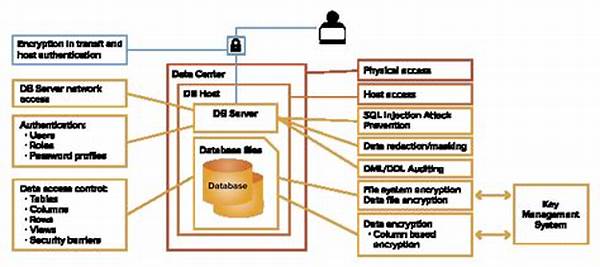In today’s ever-evolving digital landscape, the concept of security has transcended beyond traditional barriers. The era of one-size-fits-all solutions has long passed, paving the way for more sophisticated strategies like the multi-layered security architecture. This approach, often likened to the sturdy and resilient fortress walls of medieval times, offers a robust shield against the myriad of cyber threats lurking in the digital arena.
The basic idea of a multi-layered security architecture is akin to the old adage, “Don’t put all your eggs in one basket.” By distributing security measures across multiple layers, this architecture ensures that even if one barrier fails, others are in place to protect crucial data. Imagine a cyber intruder trying to breach a digital castle. With each layer, this intruder faces new challenges, compelling them to rethink their strategies. Such a design is not only about making it difficult for attackers but also about gaining precious time for detection and response.
Benefits Beyond the Basics
The true strength of multi-layered security architecture lies in its depth. First, it establishes multiple lines of defense, significantly reducing the probability of a total security failure. Then, by integrating a variety of security solutions—like antivirus software, firewalls, intrusion detection systems, and regular security audits—it reduces vulnerabilities.
Adding to its appeal is the level of customization it offers. Companies can prioritize layers based on their unique needs, ensuring cost-effectiveness while maintaining robust protection. This adaptability extends beyond large enterprises to budding startups eager to secure their networks without draining resources.
Moreover, multilayered security not only protects but educates. Over time, organizations learn about potential threats, making them proactive rather than reactive. This continuous cycle of assessment and adaptation creates an environment where security becomes an integral part of a company’s identity.
Enhancing Security Measures
Pioneers of the digital age advocate for the use of a multi-layered security architecture, emphasizing its role in creating a safer online environment. The blend of innovation with time-tested defense strategies ensures that businesses remain a step ahead in the cyber battleground. So, what’s next for this formidable security strategy? As technology advances, one can only anticipate further enhancements, which promise even more robust protection for all digital frontiers.
—
The Purpose of Multi-Layered Security Architecture
As we delve deeper into the rationale behind the adoption of multi-layered security architecture, it becomes evident that this strategic approach is not merely a trend but a necessity. The digital era demands proactive security measures, and this architecture is designed to meet that demand head-on.
Multi-layered security architecture serves a multi-fold purpose. Its primary objective is to ensure the confidentiality, integrity, and availability of data. Unlike single-layer security mechanisms that can be easily breached, this architecture provides comprehensive security, safeguarding valuable information from unauthorized access. It establishes a robust perimeter that encrypts data at every potential point of vulnerability.
Holistic Protection
While some may consider the implementation of multi-layered security architecture as overkill, the need for such measures cannot be understated in the wake of evolving cyber threats. This architecture offers holistic protection by combining different security technologies to create a comprehensive shield. By ensuring that each layer complements the other, it minimizes potential security gaps, offering round-the-clock protection.
Incorporating real-time monitoring further enhances its effectiveness. Security teams can identify and mitigate risks promptly, significantly reducing the threat window. This leads to faster decision-making and response times, crucial in the ever-evolving world of cyber threats. Additionally, regular updates and maintenance of each layer become simpler due to its modular structure.
Efficiency in Diversity
Another noteworthy advantage of multi-layered security architecture is the diversity in its approach. It blends various security tools, such as firewalls, intrusion detection systems, and endpoint protection, each with its specialty. This diversity ensures that no stone is left unturned when securing digital assets.
By embracing a diverse security portfolio, organizations also future-proof themselves against emerging threats. This proactive stance empowers businesses to stay resilient amid the constant flux of cyber challenges, assuring stakeholders that their data is in safe hands.
Adapting to Change
In an era where cyber threats are as dynamic as the technology that spawns them, adapting to change is vital. Here lies the unique selling point of multi-layered security architecture—it evolves with time. Businesses aiming for longevity should view this architecture not as a static solution but as a dynamic framework capable of learning and growing.
As cyber threats continue to develop, so must our approach to combating them. By investing in a multi-layered security system that adapts and updates regularly, companies can position themselves not just as secure entities but as pioneers in safeguarding the digital realm. This not only protects current assets but also boosts the brand’s reputation, fostering trust among clients.
—
Key Actions for Strengthening Multi-Layered Security Architecture
To effectively implement a multi-layered security architecture, consider the following actions:
Securing an organization in the digital age isn’t just about putting up barriers. It’s about creating a living, breathing fortress—a multi-layered security architecture that integrates, evolves, and protects. Whether it’s safeguarding the biggest enterprises or small businesses, every layer counts, every action matters, and ultimately, every decision shapes the future of digital security. Embrace these measures, and be part of the vanguard in the fight against online threats.

